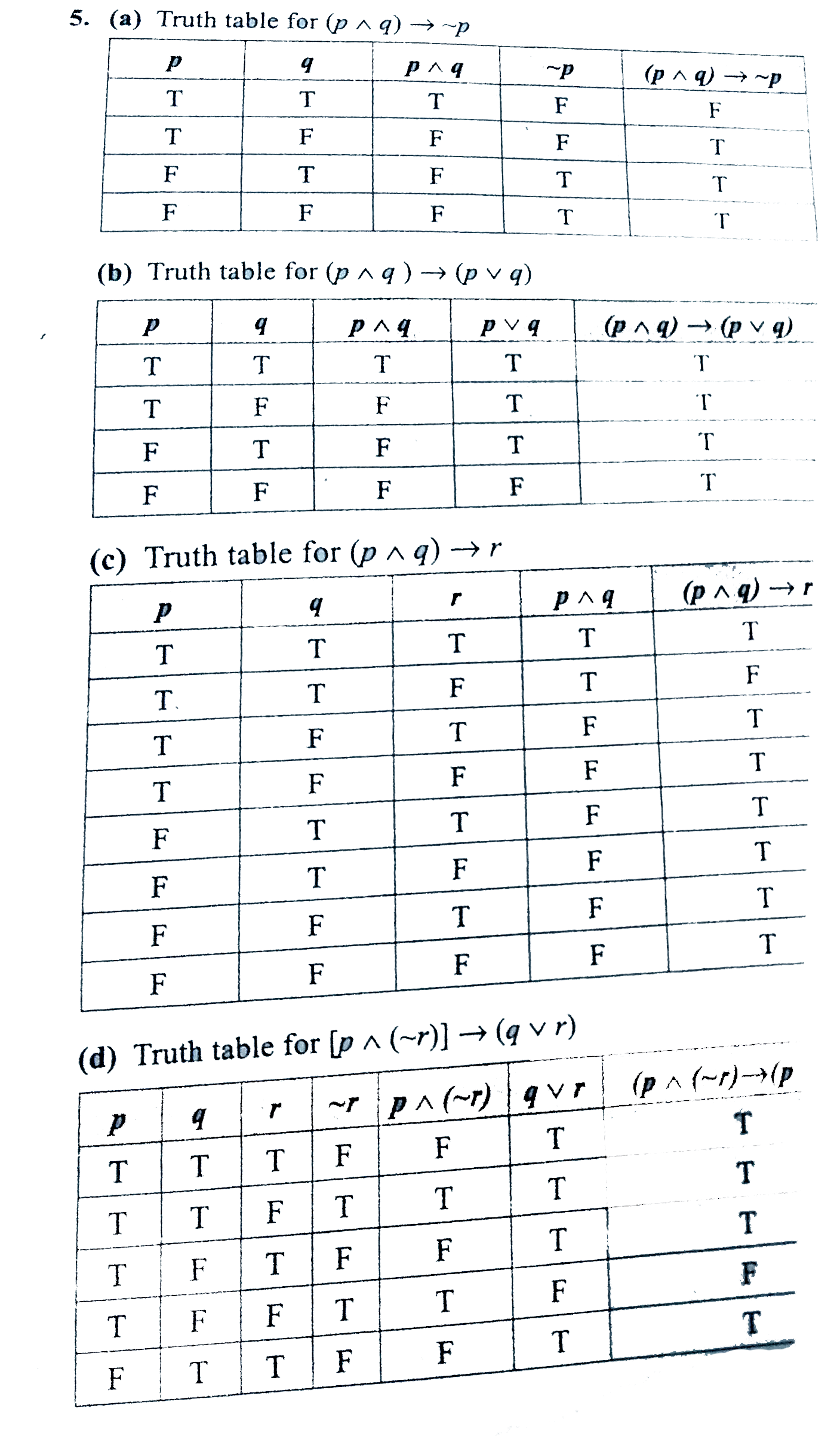Construct the truth table for the followings statements :
(a) (p∧q)→~p (b)(p∧q)→(p∨q)
(c) (p∧q)→r (d)[p∧(~r)]→(q∨r) Solution in Tamil
Topper's Solved these Questions
- MATHMETICAL REASONINGBOOK - CENGAGECHAPTER - MATHMETICAL REASONINGEXERCISE - Exercise 10.2
5 Videos
- MATHMETICAL REASONINGBOOK - CENGAGECHAPTER - MATHMETICAL REASONINGEXERCISE - Exercise (Single)
38 Videos
- MATHMETICAL REASONINGBOOK - CENGAGECHAPTER - MATHMETICAL REASONINGEXERCISE - JEE Previous Year
10 Videos
- LOGARITHM AND ITS PROPERTIESBOOK - CENGAGECHAPTER - LOGARITHM AND ITS PROPERTIESEXERCISE - JEE Previous Year
5 Videos
- MATRICESBOOK - CENGAGECHAPTER - MATRICESEXERCISE - Multiple Correct Answer
7 Videos
Similar Questions
Show that (p∧q)∨(~p)∨(p∧~q) is a tautology
View SolutionWhich of the following is not a statement.
View SolutionStatement-1: ~(p↔~q) is equivalent to (p↔q).
Statement-2: ~(p↔~q) is a tautology.
View SolutionShow that the equation esinx−e−sinx−4=0 has no real solution.
View SolutionIf A=⎡⎢⎣100101010⎤⎥⎦, then
View SolutionFind the truth values of the following compound statements :
(i) P∧(q∧r) (ii)(p∨q)∨r
(iii) p∧(q∨r) (iv)(p∧q)∨r
View SolutionConstruct the truth table for the followings statements :
(a) (p∧q)→~p (b)(p∧q)→(p∨q)
(c) (p∧q)→r (d)[p∧(~r)]→(q∨r)
View SolutionConsider the statements p , q and r
Statement - I : Negation of statement p∧(q∨r) is ~p∨(~q∧~r)
Statement - II : Negation of p∨q is (~p)∧(~q),and negation of p∧q is (~p)∨(~q)
View Solutionयदि p,q कथन है तो निम्नलिखित के लिए सत्यमान सारणी बनाये ।
~p∧q
View Solutionयदि p,q कथन है तो निम्नलिखित के लिए सत्यमान सारणी बनाये।
~(p∧~q)
View Solutionयदि p,q कथन है तो निम्नलिखित के लिए सत्यमान सारणी बनाये।
~(~p∧~q)
View SolutionSTATEMENT-1 : [p∧(p∨q)]∨[q∧(q∨p)]=p∨q
and
STATEMENT-2 : p∧(q∨r)=(p∧q)∨(p∧r)
View SolutionFind the truth values of the following compound statements :
(i) P∧(q∧r) (ii)(p∨q)∨r
(iii) p∧(q∨r) (iv)(p∧q)∨r
View SolutionConstruct the truth table for the followings statements :
(a) (p∧q)→~p (b)(p∧q)→(p∨q)
(c) (p∧q)→r (d)[p∧(~r)]→(q∨r)
View SolutionThe logical statement [~(~p∨q)∨(p∧r)]∧(~q∧r) is equivalent to (a) (~p∧~q)∧r (b) ~p∨r (c) (p∧r)∧~q (d) (p∧~q)∨r
View Solution

